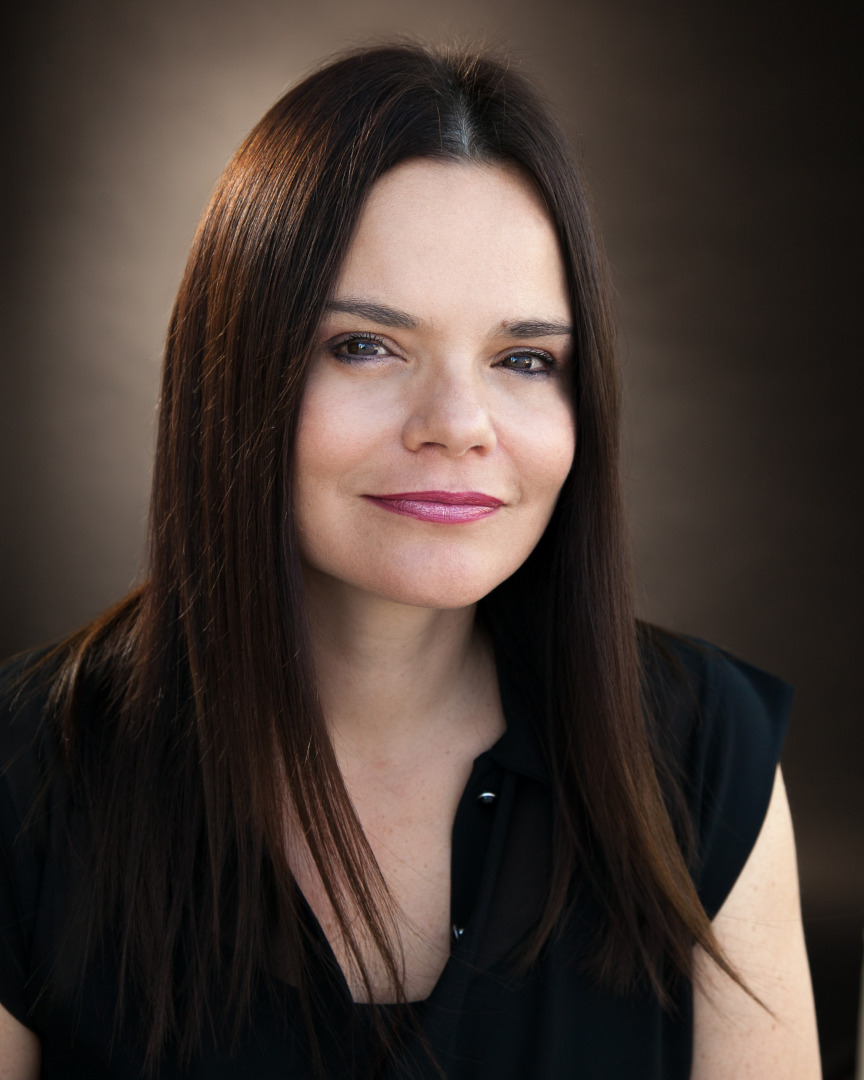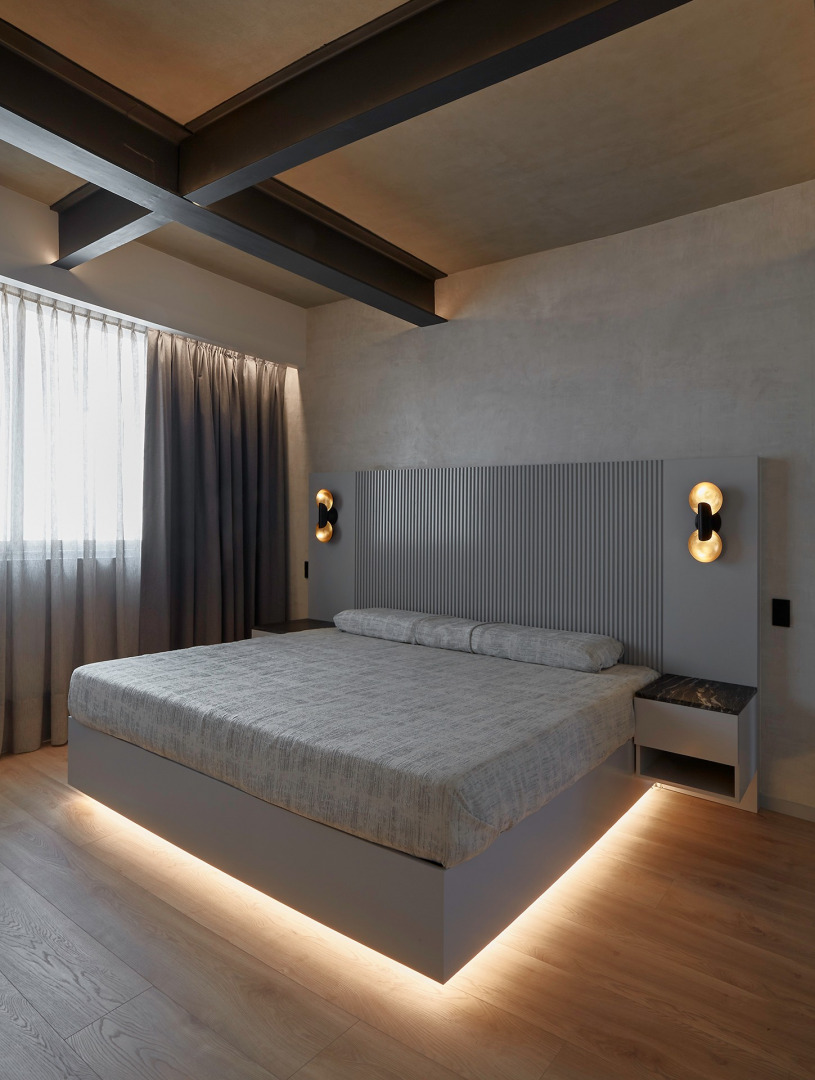Meet Erika Winters | Interior Designer


We had the good fortune of connecting with Erika Winters and we’ve shared our conversation below.
Hi Erika, what led you to pursuing a creative path professionally?
“I grew up in the heart of La Condesa, right across from a palm-lined avenue, in a house built in 1935. My great-aunt, who lived to be 101, remained there until her final days—an enduring presence in the home that shaped so much of who I am.” That home, with all its stories and shadows, shaped my earliest ideas of space, light, and memory.
As a teenager, I lived on Calle Ámsterdam, just a few blocks from Parque México, which felt more like an extension of my own home. I wandered its paths the way others might wander through their thoughts. Chapultepec and the Museo de Arte Moderno were also part of my natural territory—back when the museum had no railings and you could feel the art breathe with you. I still remember walking through the forest with my mother, attending open-air concerts at Ciudad Universitaria, and exploring the endless treasures of La Lagunilla. That market was—and still is—a museum to me. It was a different Mexico City back then: raw, poetic, layered. And those memories are stitched into everything I do.
These roots—these emotional landscapes—left a spiritual mark on me. They guide my work, my sensibilities, and how I inhabit each space I create.
In the 1990s, I founded Alquitrabe, a brand of lamps made from everyday objects and antique pieces. I gave them new life and purpose, and they found their way into Mexico’s best department stores and interior design boutiques. We even exported to Argentina, Spain, Switzerland, and exhibited in Costa Mesa, California, and SOHO, New York, at the Mark Shapiro Gallery. I still make lamps now and then, but only for very special, small-scale projects. Something more intimate, more personal.
I’ve always been a perfectionist—something I carry not as a burden but as a devotion. I grew up surrounded by culture, art, literature, and music, and from that, I developed a deep sensitivity and a refined eye for design. My greatest joy is to create pieces—especially furniture—that are pure, clean, and emotionally resonant. I work slowly, consciously. I want each creation to be something someone falls in love with—not just a piece of furniture, but a story, a feeling, a presence in their space.
And when someone truly sees that, when they understand the intention and soul behind what I’ve made, I don’t mind letting go. Because by then, it already belongs to them.
Interior design, for me, isn’t just a career. It’s a life-long calling—a way of honoring memory, space, and the unseen emotions that live between objects, textures, and light. I want my work to be lived in—to be seen, touched, and felt every single day. I want my clients to feast their eyes on something real, something with soul, and to feel a quiet joy in its beauty. My intention is always to create spaces that breathe calm—a kind of visual serenity—while still remaining rooted in an urban, contemporary spirit.
I believe good design should not only reflect who we are, but also the values we choose to uphold. One of mine is the responsibility to recycle and reimagine. That’s what led me to develop my Patchwork Collection, where I give new life to leftover fabrics, transforming them into bold, innovative pieces. Each one is a dialogue—between what’s been discarded and what can be dreamed.
In this collection, as in all my work, I draw inspiration from my immediate world. I find great beauty in imperfection, in contrast, in the unexpected harmony of different times and textures. I’ve never wanted my home—or any home—to feel like it came off a production line. That would be such a missed opportunity. I believe homes should reflect the wonderful chaos of who we are. We are not made in molds—we are patchworks ourselves, layered with experience, memory, and personal history.
What I try to offer through my work is a bridge between the craftsmanship of the past and the innovation of the present. I use materials and shapes with historical weight—not to live in nostalgia, but to create something deeper, more textured, more meaningful. When a piece carries a story, it carries energy. And that, to me, is luxury: not extravagance, but significance.
Design, for me, is about creating relationships—between people and objects, between history and now. I want to build homes that feel like a conversation with time itself.

Can you give our readers an introduction to your business? Maybe you can share a bit about what you do and what sets you apart from others?
I founded Erika Winters Design in 2004 with one clear intention: to create soulful spaces that inspire, uplift, and express the stories of those who live in them. Design runs through my veins—it’s how I connect with the world, how I make sense of beauty, memory, and form.
What sets my work apart is not just style, but feeling. I infuse each project with a sense of artistry and emotion—color, light, and detail are not just visual elements, but living energy. My goal is always to design with depth: spaces that breathe, evolve, and linger in the air like a favorite scent or melody.
Over the past 32 years, I’ve developed a strong and structured design firm that allows me to take on larger-scale architectural and interior projects, both residential and commercial. From luxury homes to upscale office lobbies, I offer a holistic design experience—from the big picture to the smallest touch. Every project is grounded in elegance, precision, and a deep understanding of my client’s vision and lifestyle.
But beyond interior design, I’m also passionately exploring industrial design—a field that lets me translate my ideas into physical forms. I’ve spent years sketching tables, armchairs, vases, plates, tiles, textiles, wallpapers, and rugs. These pieces are not just functional—they are expressions of soul, shaped by hand and heart. I’m now in the process of launching collections through my website that reflect this deeply personal creative language.
At Erika Winters, Inc., we take pride in offering not only high-end design, but full-service expertise—from project management and permit handling, to color consultations and complete home transformations. We specialize in both modern and contemporary styles, and our work spans luxury residences, boutique commercial spaces, custom furnishings, curated accessories, and one-of-a-kind wall art.
My mission has always been to create beauty that lives and breathes. I believe that a well-designed space is not just seen—it’s felt. It becomes part of your daily ritual, a source of calm, joy, and identity.
Whether you’re building from the ground up or reimagining a single room, I bring my full heart, eye, and experience to the process. If you’re looking for an inspired creative to help design your next dream space, I invite you to explore my world.
.

Any places to eat or things to do that you can share with our readers? If they have a friend visiting town, what are some spots they could take them to?
Well 7 days is not enough, Los Angeles has so many different ways to enjoy it! But lest’s see…
Day 1 – Celestial Welcome in Los Feliz
We’d begin in my favorite neighborhood—Los Feliz. A late afternoon hike through Griffith Park leads us to the iconic Griffith Observatory, where we’d catch the sunset as the city begins to shimmer below us. Afterward, we’d indulge in homemade pasta and old-world charm at Il Capriccio on Vermont, tucked away like a little secret between palm trees and murals. First night = magic.
Day 2 – Diner Dreams & Design Conversations
We’d take it slow, wander around Los Feliz Village, pick up a rare book or vinyl, and maybe catch a film at the Vista Theater. For a midday treat: milkshakes and truffle fries at Fred 62, a 24-hour diner that’s pure LA personality. It’s where creatives meet comfort food. We’d spend the evening catching up on ideas, creativity, and life over late coffee and jukebox tunes.
Day 3 – The Getty & Architectural Highs
Today’s for architecture, art, and air. We’d head up to The Getty Center, where gardens meet galleries and light plays on travertine like music. We’d linger over lunch at the café, soaking in the views, maybe even sketching. Back in the city, we’d stop at The Cathedral of Our Lady of the Angels by Rafael Moneo—a spiritual, brutalist masterpiece that hushes the noise of the city. That space is sacred in every sense.
Day 4 – Downtown Art & Rooftop Skies
Downtown day. We’d explore The Broad Museum, with its striking facade and contemporary masterpieces, then cross over to MOCA. Lunch at Grand Central Market is always a good idea—tacos, ramen, or a legendary egg sandwich. In the evening, we’d sip cocktails at Perch, a rooftop with Parisian flair and a skyline that dazzles at dusk.
Day 5 – LACMA & Creative Currents
We’d dedicate this day to LACMA, losing ourselves in modernist paintings and sculpture gardens. A walk through the La Brea Tar Pits next door brings prehistoric wonder into the mix, and if energy allows, a detour to The Petersen Automotive Museum or the Craft Contemporary. Dinner? Maybe République, where design and cuisine dance together.
Day 6 – Glass, Ocean & Light
One of the most unforgettable spots in Southern California is The Wayfarers Chapel, also known as the Glass Church—designed by Frank Lloyd Wright Jr. and set on the cliffs of Rancho Palos Verdes. We’d make a half-day of it: morning drive, ocean views, and the hush of light filtering through redwoods and glass. After that sacred pause, we’d head to Venice Beach or Santa Monica, rent bikes, dip toes in the Pacific, and watch the sun fall into the ocean like a secret.
Day 7 – A Quiet, Meaningful Goodbye
Our last day would begin with brunch at Alcove Café, surrounded by gardens and laughter. Then we’d walk through Barnsdall Art Park, maybe take a tour of the Hollyhock House—a Frank Lloyd Wright classic full of poetry and perspective. If time allows, we’d return to The Cathedral, letting its silence bless the end of the journey. And finally, one last toast—perhaps at Fred 62 again. Because great trips, like great friendships, deserve a full-circle moment.

Who else deserves some credit and recognition?
My partner Luis Herrera, my mum Maritza and my kids Adrian and Mariana
Website: https://www.erikawintersdesign.com
Instagram: @erikawintersdesign
Linkedin: https://www.linkedin.com/company/erika-winters-design/
Twitter: @erikawinters
Facebook: https://www.facebook.com/ErikaWintersDesign/
Youtube: https://www.youtube.com/@ErikaWintersInc

Image Credits
Interior apartment: Hector Velasco Facio
Gas Station: Noel Kleinman
